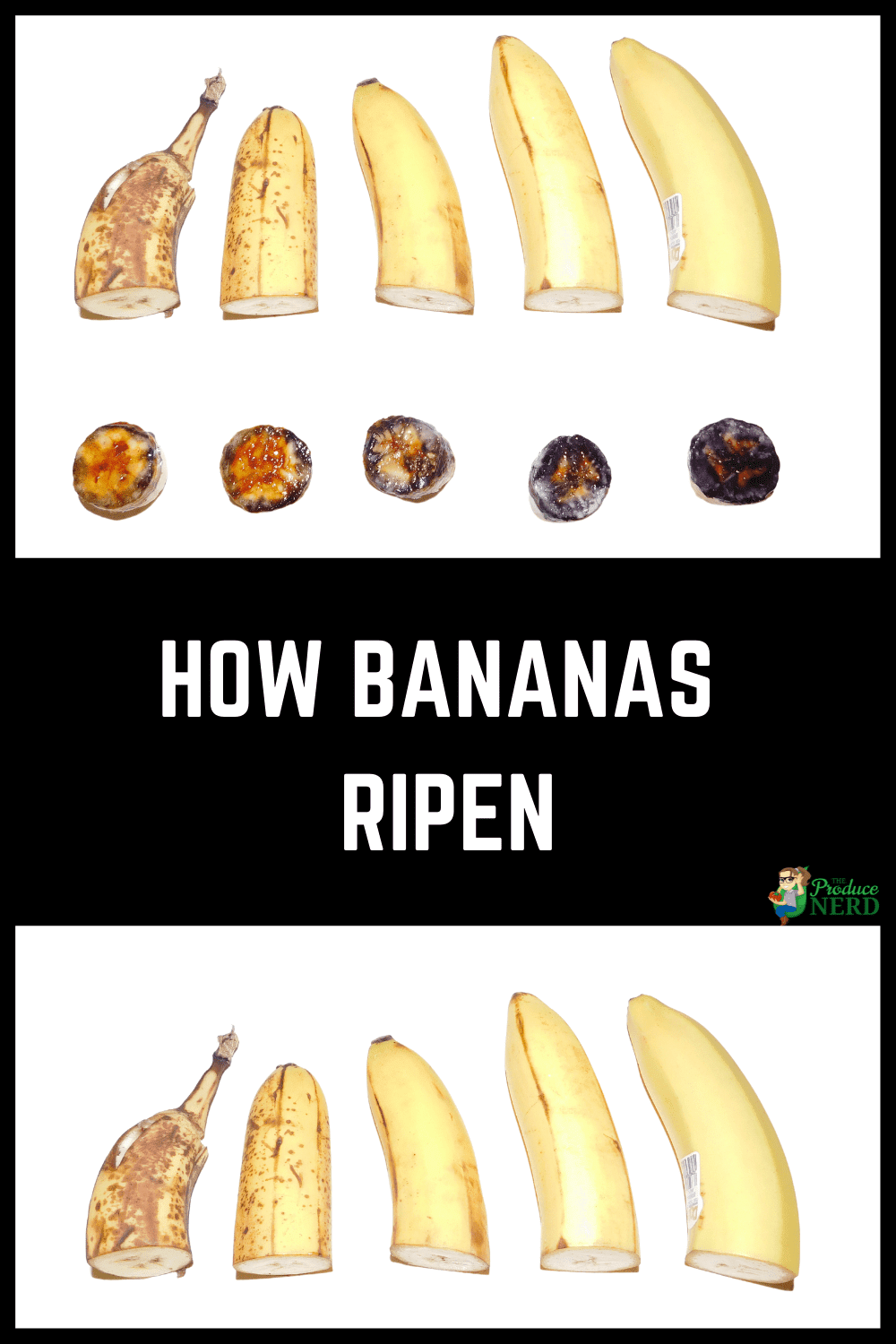Bananas are such a common fruit, and they are very inexpensive compared to most any other food! You can eat them by themselves, or with cereal, ice cream, peanut butter, fruit salad, banana bread, etc. Most people have been exposed enough to know which banana ripeness they prefer (e.g., more green all the way to a spotty yellow). For example, I prefer bananas that are greener and my husband prefers to eat them once all of the green has converted to yellow. But, besides knowing that banana ripening is occurring, do you know what is really going on with the banana while it changes color on the outside?
What color are bananas when they are harvested?
Bananas are harvested prior to ripening, which means that they are harvested fully green. At this stage, they are not yet edible. They are at the stage where you cannot really open the peel and the banana is difficult to bite into.
What happens between bananas being harvested and when they arrive at the grocery store?
Between the time they are harvested and the time they arrive on the grocery display, they are placed into ripening rooms and exposed to ethylene gas, which acts as a catalyst for ripening. (They are able to do this since bananas are climacteric fruit, which means that if harvested at the proper maturity, they can continue ripening after harvest.)
Banana Ripening Process
By the time you purchase them at the grocery store, they have already started their ripening process and have reached a certain ripeness stage, which is why the banana display will normally have a range of bananas from more green to more yellow. In addition to the ethylene gas exposure, the bananas that are more yellow/brown on the grocery display will aide in speeding up the ripening process as well.
When you take them home and set them on the counter, the banana ripening process continues. If they are on the counter next to other climacteric fruit (which give off ethylene gas), or even near a heater vent, that will speed up their ripening process.
Visual Demonstration of the Banana Ripening Process
The picture above is a demonstration I recreated with iodine and bananas, as iodine is able to detect starch. I cut sections from bananas that were at different ripeness stages and dipped them into an iodine solution (just a generic bottle purchased from the pharmacy to help treat wounds!) so that you can see what is happening internally with the bananas as they ripen. You can see that as you go from left to right, the colorant from the iodine increases as the bananas go from spotty (riper) to green (less ripe). The amount of colorant is demonstrating the level of starch contained in the banana because as the banana ripens, there is an internal process that is converting starch to sugar. That is why the spotty bananas are sweeter, because they contain a greater amount of sugar!
This same type of study can be done with apples and pears to demonstrate their starch versus sugar contents. If you have any iodine laying around, I encourage you to try it out for yourselves, especially if you want a fun activity to do with kids to get them excited about eating more to determine which is their favorite ripeness stage! Please comment and share your results, as well as which banana is right for you!
If you enjoyed this post, you might also like:

Love all the information I’m gleaning! My son loves banana’s so I’m curious how long is the time frame from when the banana’s are picked to when they are in the store?
Hey Robin, thanks for the comment!:) Bananas can last up to 6 weeks after harvest. There is not a set amount of time from harvest to grocery display, but factors, such as travel time, affect how long it takes the bananas to arrive to a local distribution center to get the ripening treatment before being sent to the store.
Dear Megan,
Very insightful, I had a question. Does this go for plantains as well? We often buy plantains and 1 turns black yet the other remains green and not sure why when bought from the same place and stored in same temperature? Thanks!!
Hello! Plantains also go through the starch to sugar conversion during the ripening process, although bananas typically have a higher sugar content than plantains and plantains take longer to ripen. Just like bananas, plantains are harvested prior to ripening, at the mature-green stage. However, since some people prefer to eat them at the mature-green stage, they do not always go through the ethylene ripening (as bananas do) prior to being placed on the grocery display. In regards to your situation, it could be that either some of the plantains go through the ethylene ripening process while others don’t or it could be that you are buying plantains at different ripeness stages and it is taking the green plantains longer to become ripe.
Thank you very helpful!!